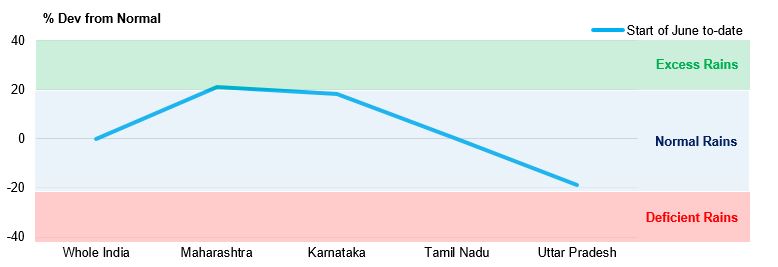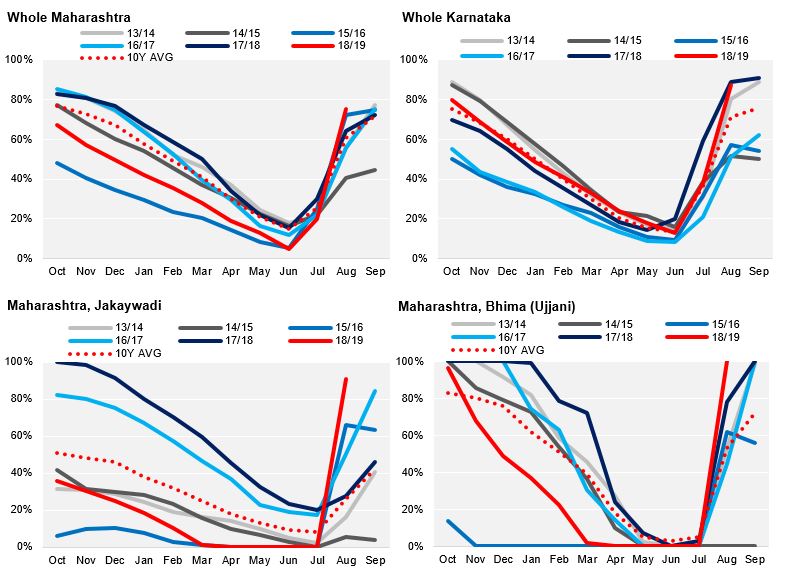- The monsoon this year is going to be above-average, the first since 2013.
- This is remarkable given the monsoon started more than 2 weeks late.
- Don’t forget that cane in the west of India suffered from low water availability for 3 months before the monsoon arrived.
Rainfall Performance in Key Districts
Monsoon Rainfall in Key Sugarcane States

- Rainfall in all key cane sugar areas are within normal range with the exception of Maharashtra.
- The rains have now slowed: In Maharashtra rainfall is 22% above normal, having peaked at 32% above average.
- This heavy rainfall has led to flooding in Maharashtra, with possible implications for sugar cane development.
- Premium subscribers can read more about the flooding here.
- Below average rain in Uttar Pradesh is not a problem as there is sufficient water availability from the River Ganges basin.
Maharashtra (Key Sugarcane Regions) – Monsoon Rainfall

- In Maharashtra, rainfall has been heavy, but unevenly distributed.
- The heaviest rainfall has been in the west and south of the state.
- Regions further east and north have received less rain; the region around Solapur is still in water deficit.
- This deficit is not now of concern because heavy rainfall has replenished reservoirs used for irrigation.
Key Cane Locations in Maharashtra

MH & KN Reservoir Levels
- We have marked 40% decline in Maharashtra’s production due to the key reservoirs which have dried since March.
- The last time this happened was in 2016; which was followed by sugar production of just 4.2m tonnes in Maharashtra (compare to the subsequent years’ 10.7m tonnes!).

- As a result of the dry spell, some sugarcane has been harvested early as cattle fodder.
- Maharashtra cane acreage has reduced by 24% compared to last season: 840k hectares down from 1,100k hectares.
- We forecast that Indian sugar production will fall from 33m tonnes last year to 29m tonnes in the season about to begin.
Czarnikow 2019/20 India Estimates















